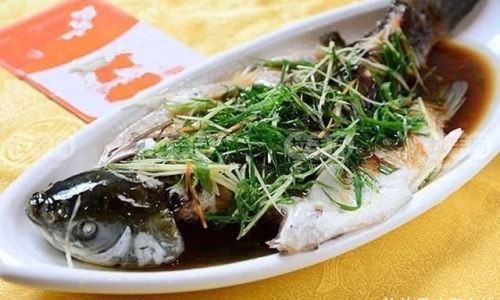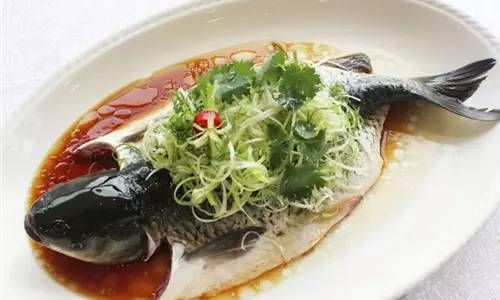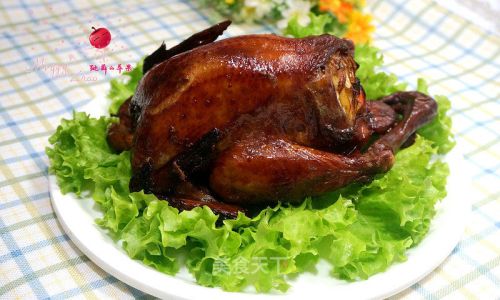Introduction
In the vast realm of culinary arts, steaming fish holds a unique and esteemed position, especially in Asian cuisine. Among the myriad of fish species suited for steaming, grass carp (Ctenopharyngodon idella) stands out due to its delicate flavor, firm yet tender texture, and nutritional benefits. This freshwater fish is abundant in essential omega-3 fatty acids, high-quality protein, and various vitamins and minerals, making it an ideal choice for health-conscious individuals.
Steaming grass carp not only preserves its natural flavors but also ensures that the fish remains moist and flavorful. This cooking method is relatively simple, requiring minimal ingredients and equipment, yet it yields a dish that is both elegant and comforting. In this comprehensive guide, we will delve into the intricacies of preparing steamed grass carp, from selecting the perfect fish to mastering the steaming technique and creating a harmonious sauce to complement its delicate taste.

Section 1: Selecting the Right Grass Carp
The first step in preparing a successful steamed grass carp dish is selecting a fresh, high-quality fish. Here are some key considerations:
-
Freshness: Look for fish with bright, clear eyes, firm flesh that springs back when pressed, and red or pink gills. Avoid fish with dull eyes, slimy skin, or a strong fishy odor.
-
Size: For steaming, a medium-sized grass carp (around 1 to 1.5 kilograms or 2.2 to 3.3 pounds) is ideal. Smaller fish cook more evenly and quickly, ensuring tender, moist meat.
-
Source: Opt for fish from reputable suppliers or local farmers’ markets. Ask about the farming practices to ensure the fish is free from contaminants and antibiotics.
-
Seasonality: Grass carp is available throughout the year, but it may be more plentiful and fresher during certain seasons. Check with your local fishmonger for the best times to buy.
Once you have selected your grass carp, it’s essential to handle it properly to maintain freshness. Wrap the fish tightly in plastic wrap or store it on ice if you’re not preparing it immediately.
Section 2: Preparing the Fish for Steaming
Before steaming, the fish must be cleaned and prepared meticulously to remove any impurities and ensure an enjoyable eating experience. Here’s a step-by-step guide:
-
Cleaning:
- Rinse the fish under cold running water to remove any surface dirt or scales.
- Use a sharp knife to scale the fish if necessary. Be careful not to cut into the flesh.
- Cut off the fins and tail using kitchen scissors.
- Make a shallow cut along the belly from the vent to the gills, then gently pull out the guts and discard them.
- Rinse the cavity thoroughly under cold water.
- Use a spoon to scrape off any remaining black membrane inside the cavity and on the gills. This membrane can be quite bitter.
-
Scoring:
Make diagonal cuts (about 1/2 inch deep) on both sides of the fish. This allows the steam to penetrate more evenly and helps the sauce flavor the fish better.
-
Marinating (Optional):
- While steaming itself is a minimalistic cooking method, you can lightly marinate the fish for added flavor. Use a mixture of salt, white pepper, and a splash of Shaoxing wine or dry sherry. Rub the mixture into the fish cavity and over the scored areas.
- Let the fish marinate for about 15-20 minutes before steaming.
Section 3: Preparing the Steaming Equipment and Ingredients

Steaming requires specific equipment to ensure that the fish cooks evenly and retains its moisture. Here’s what you’ll need:
-
Steamer: A traditional bamboo steamer is ideal, but a metal or stainless steel steamer basket will also work. Ensure that it fits securely over your pot or wok.
-
Pot or Wok: A large, wide pot or wok with a tight-fitting lid is necessary to create a sealed environment for steaming.
-
Water: Fill the pot with enough water to reach just below the bottom of the steamer basket. Use boiling water to start the steaming process immediately.
-
Lining the Steamer: Line the steamer basket with parchment paper, banana leaves, or even cabbage leaves to prevent the fish from sticking and to add a subtle aroma.
-
Accompaniments: Prepare some ginger slices, green onions, and cilantro for garnishing. These ingredients not only enhance the flavor but also help to neutralize any fishy odors.
Section 4: The Steaming Process
Now, it’s time to steam the grass carp. Follow these steps carefully to ensure a perfect result:
-
Preheating the Steamer: Bring the water in the pot to a rolling boil before placing the fish in the steamer. This ensures that the steaming process begins immediately and consistently.
-
Placing the Fish: Carefully lift the marinated fish (if using) and place it on the lined steamer basket. You can stuff the cavity with slices of ginger and green onions to add flavor and prevent curling.
-
Covering and Steaming: Quickly cover the pot with the lid to trap the steam. Steam the fish over high heat for about 8-10 minutes, depending on its size. A good indicator of doneness is when the flesh flakes easily with a fork.
-
Resting: Once done, remove the steamer basket from the pot and let the fish rest for a couple of minutes. This allows the juices to redistribute, ensuring a moist and tender texture.
Section 5: Creating a Delicious Sauce
While the fish is steaming, prepare a simple yet flavorful sauce to complement its delicate taste. Here’s a classic recipe:

Ingredients:
- 2 tablespoons soy sauce
- 1 teaspoon sesame oil
- 1 teaspoon Shaoxing wine or dry sherry (optional)
- 1 teaspoon rice vinegar or white vinegar
- 1 teaspoon sugar or honey
- 1 clove garlic, finely minced
- A pinch of white pepper
- 1-2 tablespoons of water (if needed to thin)
- 1 tablespoon chopped green onions
- A few slices of fresh ginger
Instructions:
- In a small bowl, mix together the soy sauce, sesame oil, Shaoxing wine (if using), rice vinegar, sugar, minced garlic, and white pepper.
- Taste and adjust the seasoning as needed. If the sauce is too thick, add a little water to reach your desired consistency.
- Heat the sauce gently in a microwave or on the stove until the sugar is dissolved and the flavors meld together.
- Garnish with chopped green onions and ginger slices before serving.
Section 6: Serving the Steamed Grass Carp
Once the fish has rested, it’s ready to be served. Here’s how to present it beautifully:
-
Transferring the Fish: Carefully transfer the steamed fish to a serving plate, using a spatula or two chopsticks to avoid breaking the flesh.
-
Garnishing: Arrange slices of fresh ginger, green onions, and cilantro on top of the fish for a colorful and fragrant garnish.
-
Sauce Presentation: Pour the prepared sauce over the fish or serve it on the side for dipping.
-
Accompaniments: Serve the fish with steamed rice, blanched vegetables, or a side of pickled vegetables to balance the flavors.
Conclusion
Steamed grass carp is a dish that embodies the essence of simplicity and elegance in cooking. By following the steps outlined in this guide, you can create a meal that is not only nutritious but also bursting with flavors that highlight the natural beauty of this freshwater fish. Whether you’re entertaining guests or enjoying a quiet meal at home, steamed grass carp is sure to impress with its delicate texture and harmonious taste.
Remember, the key to success in steaming fish lies in the freshness of the ingredients, proper preparation, and precise timing. With practice, you’ll soon master this technique and be able to create your own variations, incorporating different herbs, spices, and sauces to suit your taste preferences.
So, the next time you’re in the mood for a light, healthy, and flavorful meal, consider giving steamed grass carp a try. It’s a dish that promises to delight your senses and nourish your body, all while bringing a touch of culinary artistry to your table. Enjoy!






0 comments